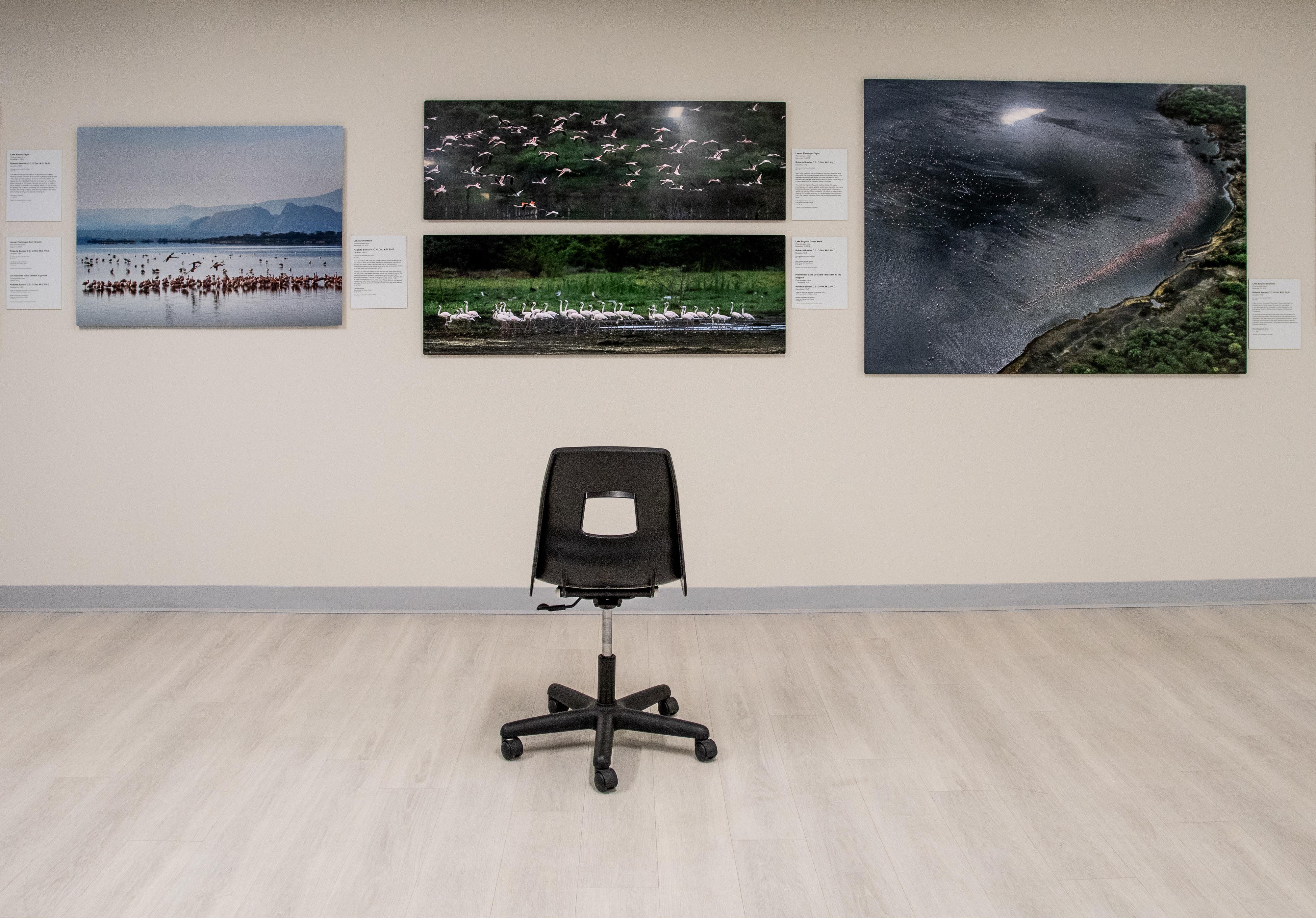
Dr. Roberta Bondar, famed Canadian astronaut, visited Humber’s Lakeshore Campus for the Opening Reception of her photography exhibition Patterns and Parallels: The Great Imperative to Survive.
Hosted by the Lakeshore Grounds Interpretive Centre, the exhibition is being displayed for the first time in the GTA and welcomes both Humber and community visitors to visit the show for free.
As the first female Canadian astronaut and the world’s first neurologist in space as part of the Space Shuttle Discovery mission in 1992, Dr. Bondar is also an internationally acclaimed photographer whose foundation is dedicated to environmental education.
Patterns and Parallels: The Great Imperative to Survive combines images from land, air and space through a partnership with NASA to tell the story of the migratory patterns of the Whooping Crane, Lesser Flamingo and Piping Plover species, which are all threatened or at risk of extinction. Dr. Bondar travelled to Piping Plover and Whooping Crane habitats across North America including Ontario, Texas, Oklahoma, Florida, Saskatchewan and the Northwest Territories. To document Lesser Flamingos, she travelled to Kenya and Tanzania in the East African Rift Valley.

Dr. Bondar is also a principal investigator (bird migration) with NASA’s Earth Observation group and partnered with astronauts aboard the International Space Station to photograph the vast distances of migratory corridors from space.
The exhibition features large, dramatic colour images taken by Dr. Bondar and selected NASA space images as well as video installations. QR codes at the exhibition create an interactive learning experience that allows visitors access to digital learning opportunities including animations, audio from Dr. Bondar and additional videos taken in the field.
“The diversity and numbers of birds are declining as our changing planet tests their fragility and resilience,” said Dr. Bondar. “People want to understand more, to reverse this alarming trend and they need stories to bolster their commitment to the critical conservation of birds.”
Dr. Bondar had the crowd chuckling along with her throughout the evening thanks to her easygoing and humorous speaking style that was peppered with jokes and anecdotes. She was pleased that Humber was hosting the exhibition as it meant students and young people would have a chance to take in her exhibition and its important message.

One hope of the exhibition, Dr. Bondar explained in her presentation, is that it will help spread the importance of habitat protection so the species will survive for future generations.
Dr. Bondar spoke about the impact humans can have on birds and the importance of caring for the environment. She shared a story about a Piping Plover that had its feet wrapped in fishing wire. Rescuers tried to reach the little bird to remove the line but couldn’t and eventually it lost its feet due to lack of circulation.
She described Whooping Cranes as an incredible bird that benefits from conservation efforts although they’re still considered endangered. The Lesser Flamingos she called a very interesting bird but noted that it’s nesting area in Tanzania – where 85 per cent of the world’s populations nests – is at risk.
Dr. Bondar received a standing ovation at the end of her presentation and followed it up by taking questions from the audience.
The exhibition is a key part of the Roberta Bondar Foundation’s Space For Birds project, which uses photography to create a visual story that will help society understand the biodiversity of nature and the impact of human actions and climate change on bird migration and habitat loss.
The exhibition is open until July 26 inside the Humber Fashion Institute at 3166 Lake Shore Blvd. W.